If I ever again hear anyone complain about how Canberra is a planned and dead city, my response is going to be: “Go to Ashgabat”!
The capital of Turkmenistan is a truly bizarre experience. Completely destroyed by an earthquake in 1948 that killed a large fraction of the population (though the Soviets denied this – there were no natural disasters in the Soviet Union), in the 1990s the first president of independent Turkmenistan – Saparmurat Niyazov, the so-called Turkmenbashi (head of the Turkmen) – started bulldozing whole neighbourhoods of Soviet era construction to rebuild Ashgabat into a white marble masterpiece.
Often called a “vanity project”, and one that could well be single-handedly keeping the Italian marble industry in business, the result (the “president’s playground”) is a pristine, empty Disneyland that is fascinating and oddly compelling.
It is an incredibly spread out city – clearly the reason I could not find an “Ashgabat walking tour” – but Nadine, our mandatory local guide, offered to arrange a minivan to take us on a city tour the next day. I was in!
We started by visiting the Turkmenbashi Ruhy Mosque, which sits almost alone in what seems to be the middle of nowhere on the edge of Ashgabat. Why is it located here? Perhaps if I give you a clue that the mausoleum of Saparmurat Niyazov and his family is the only other thing in the immediate vicinity? No? Well, it is actually located in the village where the first president of independent Turkmenistan was born of course! More on this interesting character below… It was, until recently, the largest mosque in Central Asia, and can fit 10,000 people comfortably. During our visit, apart from half a dozen women, we were the only ones there…

It is an absolutely gorgeous building and a very, very expensive one (~$100 million). That golden roof – that is 100% gold leaf! Lots of really beautiful details and very, very white in the blazing sun!
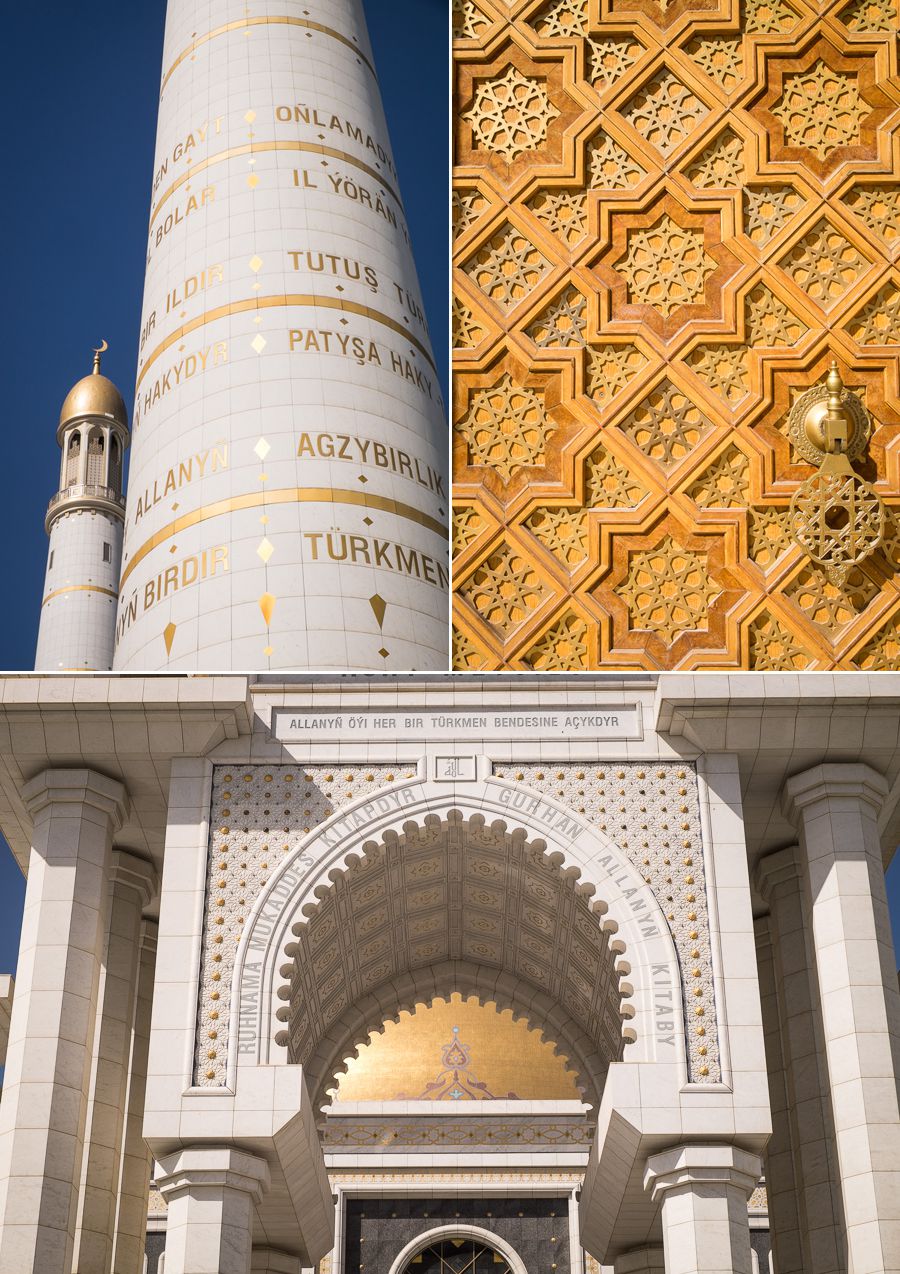
Inside (unfortunately, no photos allowed), it was a vast room empty of everything except Turkmen carpets. Unexpectedly, the decoration was very understated and it was just a peaceful, calm and beautiful place to sit and contemplate. Exactly what the inside of a religious building should be I guess!
It would have been very easy to stay for several hours, but we were off to the ancient ruins of Nisa – another UNESCO heritage listed site – and the first city of the Parthians from 3BC to 3AD.
It was already blazingly hot when we arrived at 10am and, given Turkmenistan is not known for its abundance of trees (being mostly a desert and all), we did our best to huddle in the shade of the remaining walls while Nadine translated the information given by the site’s guide.
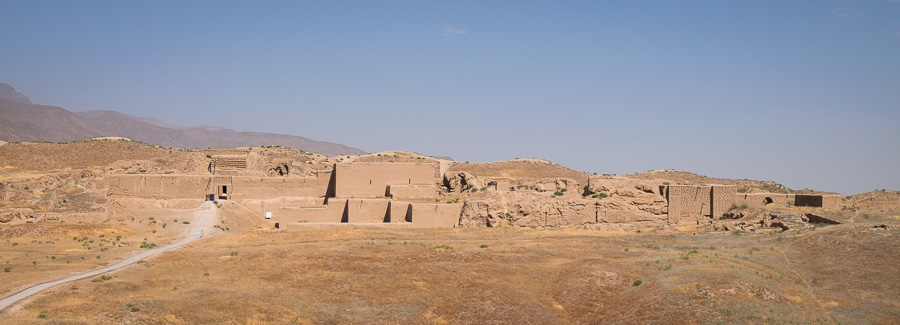
To be honest, the site was a little frustrating because the archaeologists (who are still working there) have re-covered all the remaining cool bits to help protect them. A great idea for preservation, but it doesn’t make for the best tourist attraction… For example, the walls used to be all whitewashed – but there is very little of that visible as the archaeologists have covered the walls over with mud. There are large urns and other vessels on site (some of them haven’t been removed to a museum), but they too have been covered over and their location is identified now by mounds of dirt. And while the archaeologists did leave a small piece of this decorative lintel showing – the vast majority of it is, you guessed it, hidden beneath piles of mud.
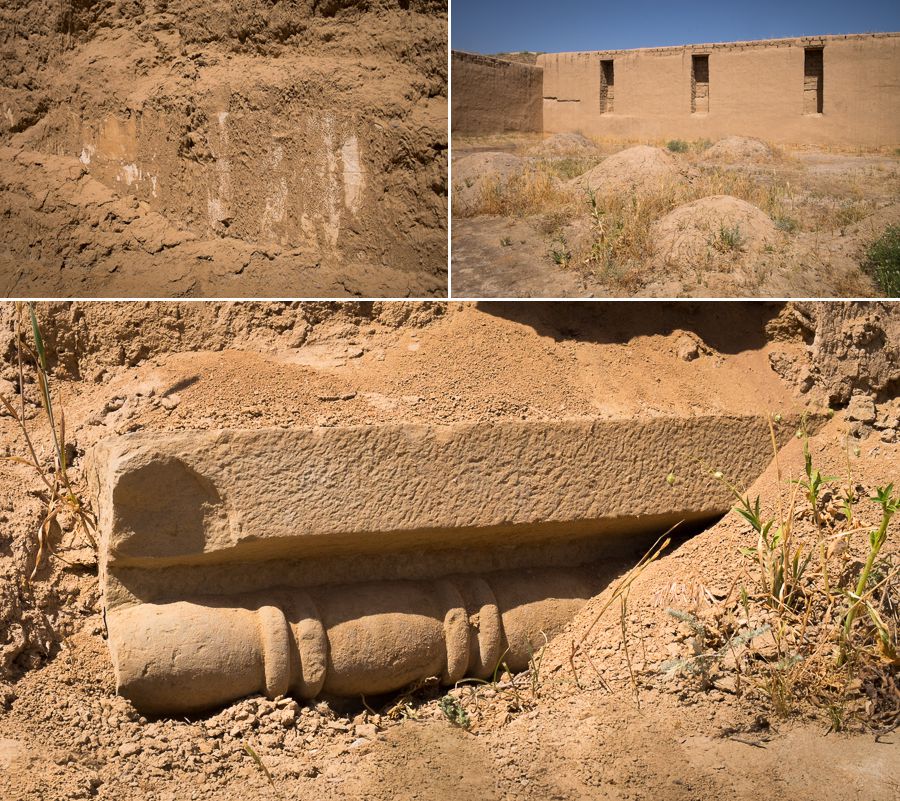
Our Russian-speaking site guide had a book of images with him so that he could show us the archaeologist’s best interpretations (there are 2 different archaeological teams working on the site) of what each of the areas of the complex would have looked like. It must have been an incredible place back in its time, but these days you have to really use your imagination!

One of the coolest things for me were the remains of brick pillars. The original bricks are from 3BC – can you even imagine?!
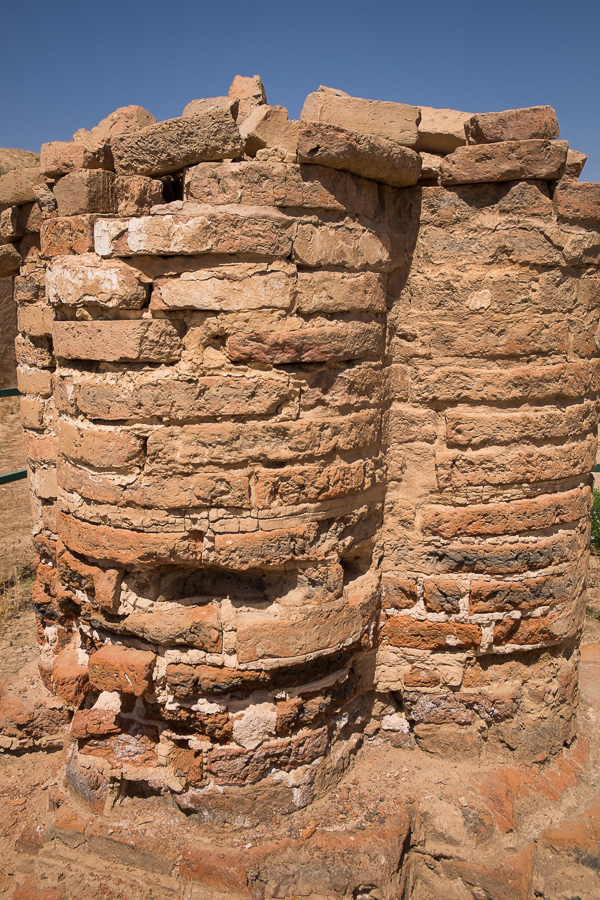
And this whitewashed window is also original and unrestored (and uncovered!).
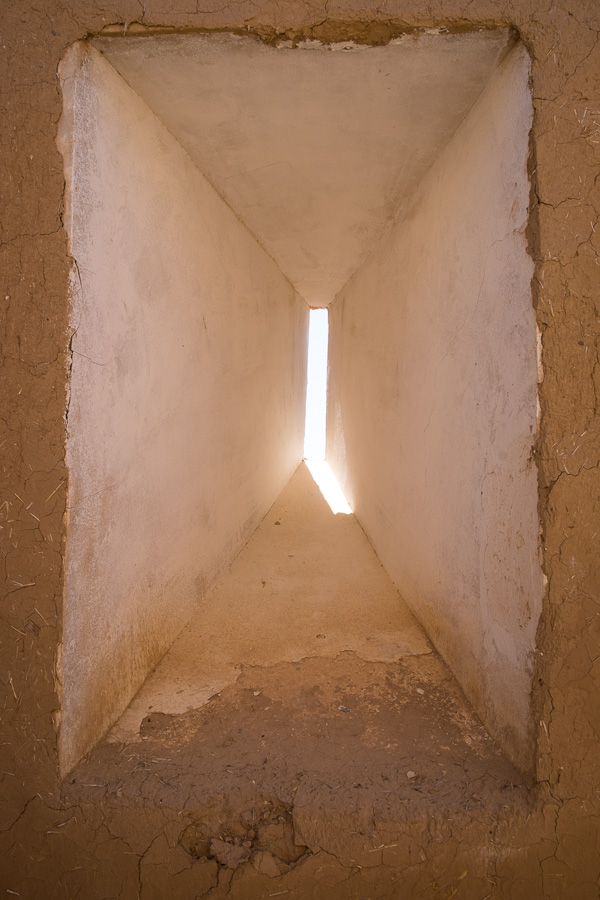
It was a really interesting visit, though there is a limited amount to see given the state of the ruins and the efforts to preserve what is left. Definitely worth a visit if you are in Ashgabat though!
Back into our air-conditioned minivan and into the heart of Ashgabat to check out some of the marble masterpieces. To give you an idea of what the whole place looks like – here are some random buildings.

Even the bus shelters are immaculate (and air-conditioned)!
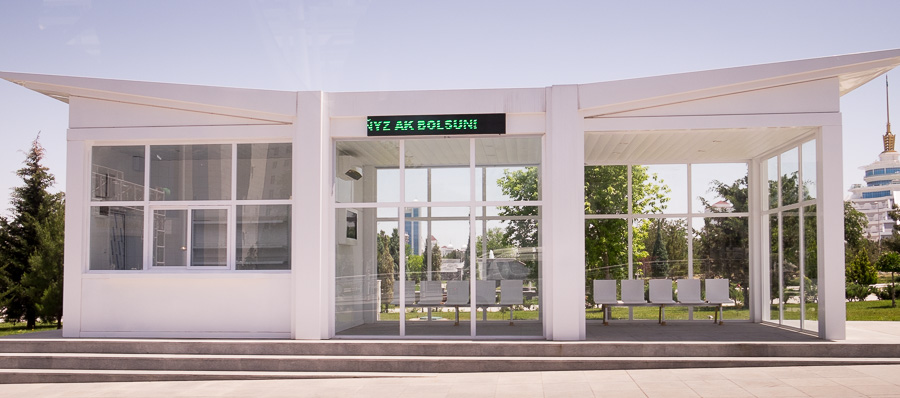
Unfortunately, I didn’t get great images (you can’t be seen taking pictures of government buildings in Turkmenistan), but I do love that the architects have created the ministry buildings in the form of what they represent. For example, the below building is the Ministry of Foreign Affairs – with the globe sitting atop it. Another example: the Ministry for Education is in the shape of an open book 😊

One of the key monuments we visited was the Monument of Neutrality – apparently Turkmenistan was recognized by the General Assembly of the UN as the first neutral state in the world in December 1995!
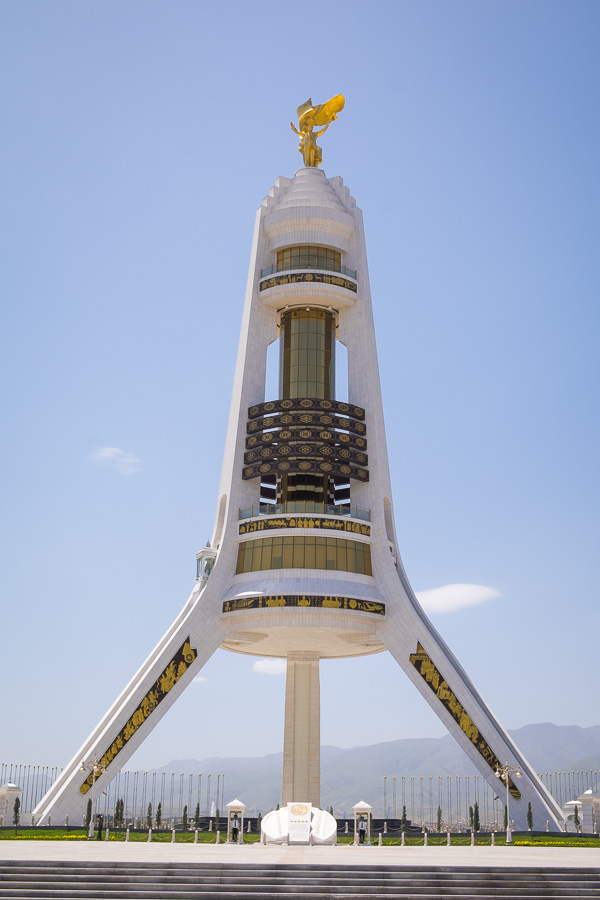
This impressive structure is topped by a gold statue of the first President of independent Turkmenistan – Saparmurat Niyazov – who used to rotate on his perch (unfortunately no longer).
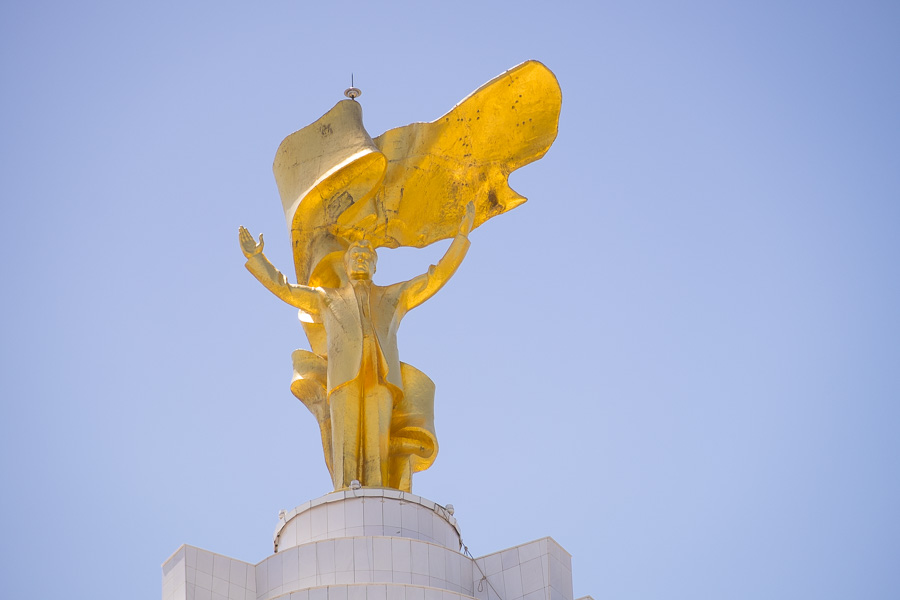
The middle section shows the 5 traditional carpet designs of the Turkmenistan’s 5 provinces (these also appear on the Turkmen flag and in tons of other places as well)

And the struts show scenes from Turkmen history and daily life.
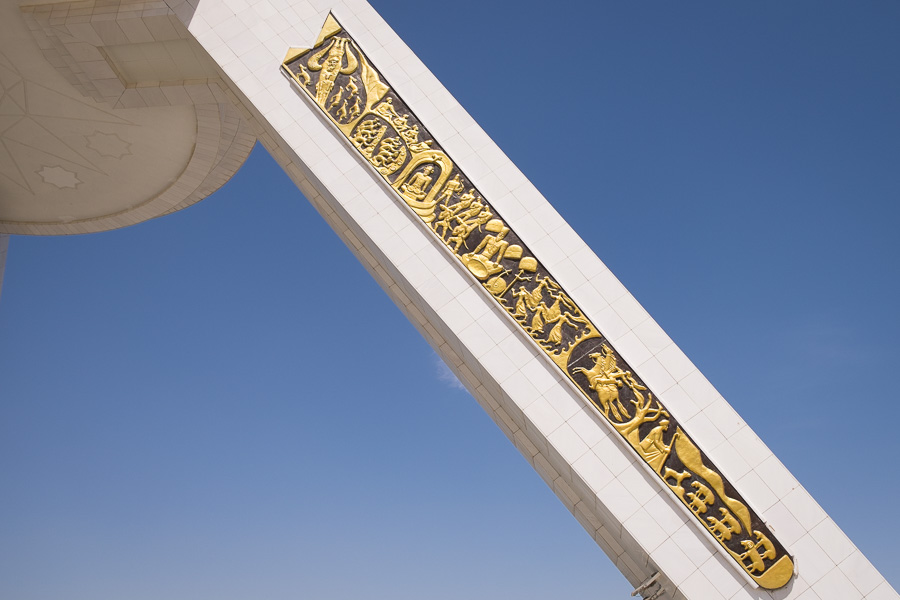
This monument was surrounded by an amazing landscaped park with an overabundance of elaborate lampposts in it … and no people. More on this in a moment!

Also, most monuments and buildings had guards posted – I figure this would have to be one of the worst jobs in the country given how hot it is in Ashgabat!

Another key monument we visited was the Constitution Monument, which is surrounded by a large number of statues of different important people in Turkmen history.
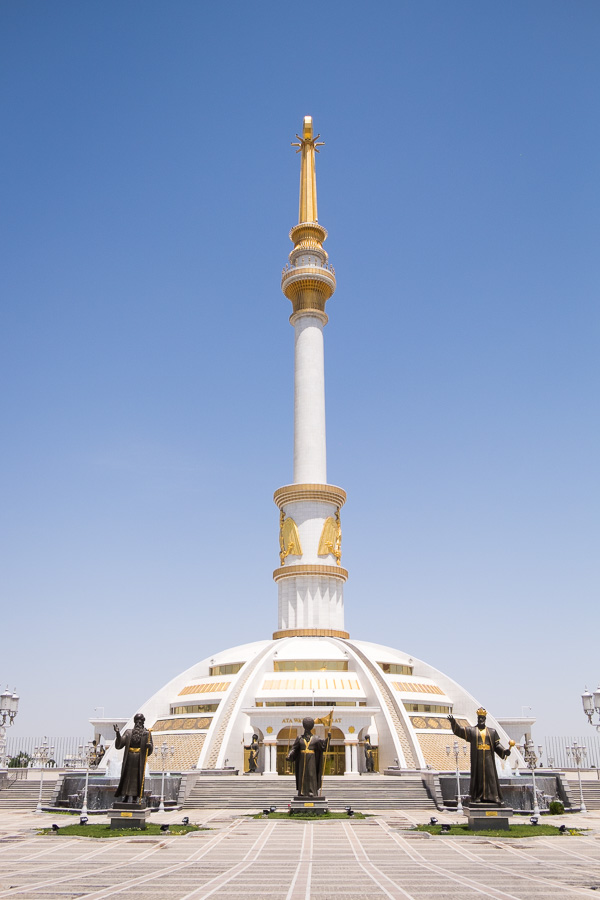
And, of course, a statue of Saparmurat Niyazov – the Turkmenbashi.
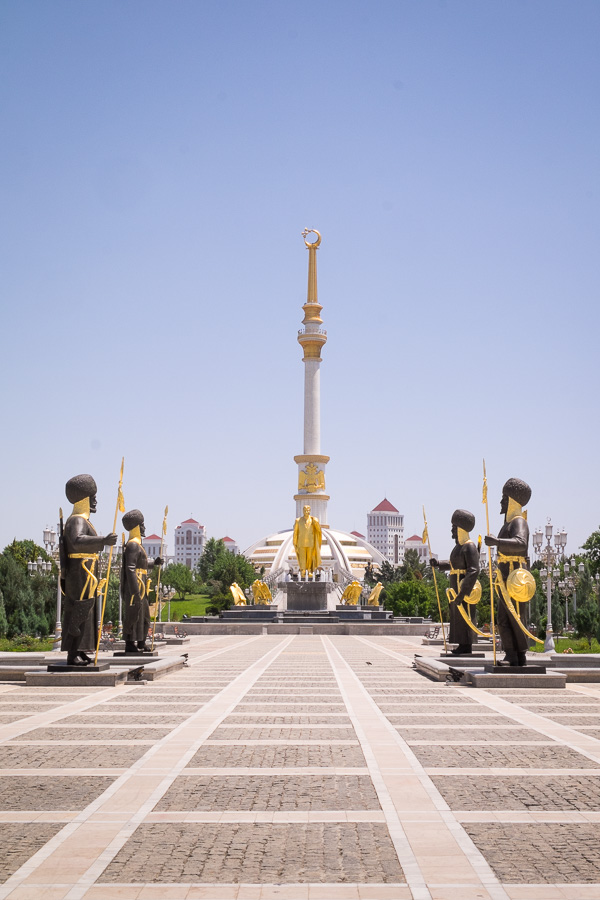
I loved this symbol on the monument and asked Nadine the significance – the 5-headed eagle represents Turkmenistan’s 5 provinces, the 2-headed snake represents being on the crossroads of the Silk Road.
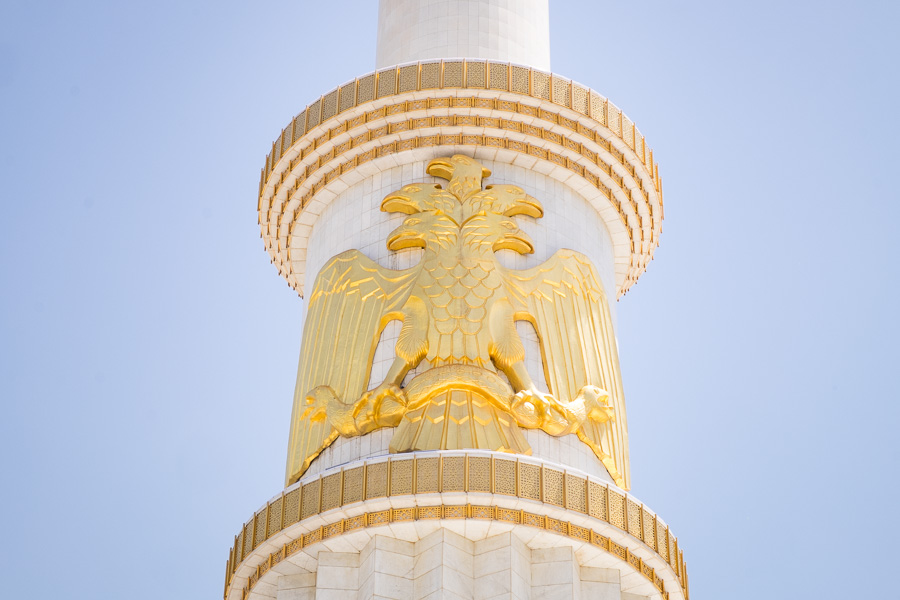
This is also a favourite place for wedding photos, and we were witness to 3 bridal parties while we were there.

These were very traditional weddings where the bride is completely covered and decked out in about 35kg of jewelry!! Remember, it was about 38 degrees on this day – I have no idea how these brides didn’t collapse on the ground due to heat exhaustion! I loved the colour and intricacy though 😊

We also visited the World’s largest indoor Ferris Wheel.
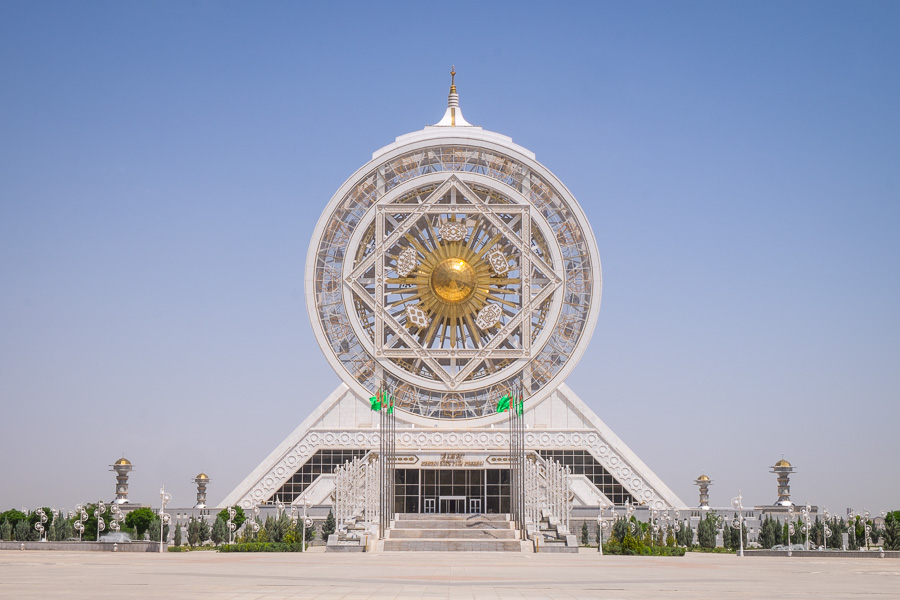
And the Wedding Palace – a civil registry building.

One final monument we visited was that of the book written by the first President of Turkmenistan (yes, he was a busy man) – the Ruhnama. This was meant to offer spiritual guidance for the nation, and was compulsory reading for all Turkmen school children until 2011.
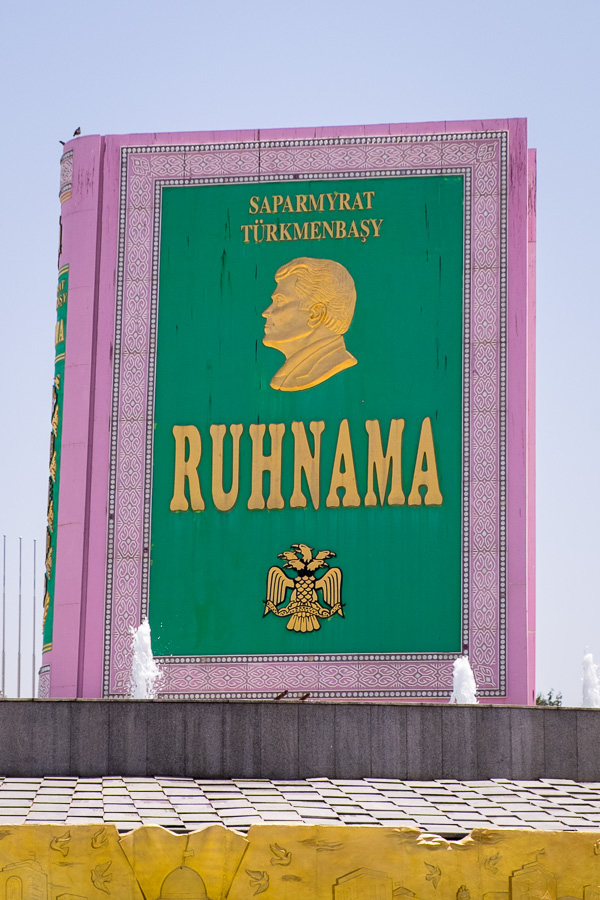
In all this driving around, one thing was particularly disconcerting.
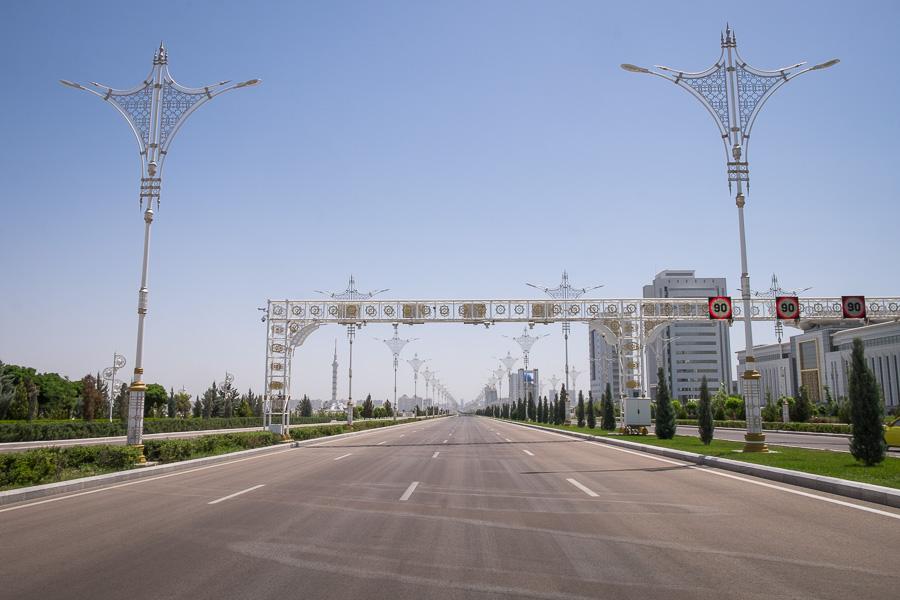
There were very, very few cars on these enormous avenues, and almost nobody out and about at all (well except those involved in the 3 weddings). It was like the zombie apocalypse had happened and we came along a little afterwards…
OK – so it was 38 degrees and nobody in their right mind would be out in that kind of heat. And it was Saturday, so maybe that had something to do with it. But it was eerily deserted in quite a spooky way! Which made it all the more fascinating 😊
Ashgabat really is a strange but oddly compelling place. All that money and all those buildings, with nobody around… Canberra is positively pumping in comparison!